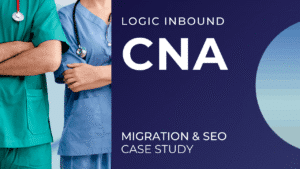
CNA CASE STUDY
CNA CASE STUDY by Ammar Z | Mar 13, 2020 Helping CNAOnlineCourse.com Grow 19x In
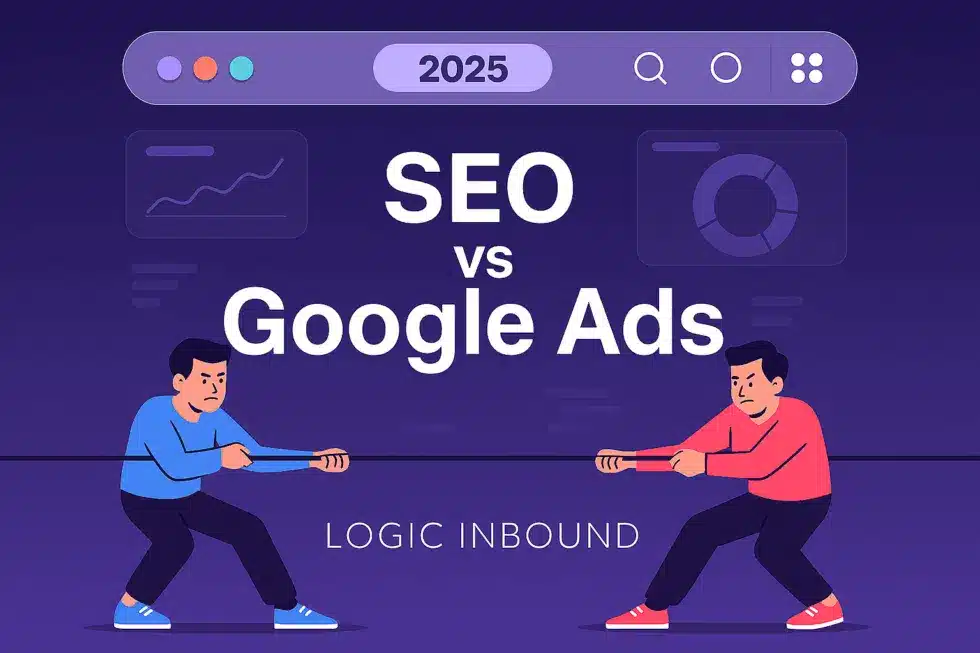
If you’re wondering whether to invest in SEO or Google Ads in 2025, you’re not alone. It’s one of the most common (and costly) marketing decisions business owners make.
Choose wrong, and you could blow thousands chasing clicks that never convert. Choose right, and your lead flow transforms, predictably and profitably.
And with Google Ads delivering an average 200% ROI, it’s no surprise that over 80% of businesses still rely on it to stay competitive.
The truth?
SEO and Google Ads aren’t rivals. They’re tools. But they work very differently and in 2025, those differences matter more than ever.
With AI Overviews crowding Google’s search results and paid ads eating up more screen space, you need a strategy that cuts through the noise.
In this guide, we’ll break down SEO vs Google Ads clearly. No fluff. No tech mumbo jumbo.
Just what works now, what doesn’t, and how to make the smartest move for your business.
Want results that actually drive leads?
See how we run both channels for clients on our SEO services and Google Ads management pages.
SEO (Search Engine Optimization) used to be simple.
Pick a few keywords, write a blog, wait for Google to love you.
Fast-forward to 2025 and it’s not quite that cute anymore.
Now, SEO means earning your spot in a search world run by AI Overviews, Featured Snippets, and infinite-scroll distractions.
Google’s Search Generative Experience (SGE) is rewriting how results show up, shoving organic links farther down the page while AI summaries give answers before users even click.
But here’s the thing: organic traffic still converts better than paid in most industries.
Why?
Because people trust it. No one says, “I love clicking on ads.”
They click the result that feels like the right answer.
And that trust pays off: 49% of marketers say organic search delivers the highest ROI of any marketing channel.
That’s exactly why SEO, when done right, still drives the best long-term results, especially for local businesses, service pros, and B2B companies.
Getting there, though, takes more than just a blog and a prayer.
You need well-structured content, schema markup (a fancy word for helping Google understand your content), and a clear intent-match between your page and what users are searching for.
At Logic Inbound, we focus heavily on building content that earns organic real estate, even in crowded SERPs.
You can see how we do it in our case study for a mold removal company that increased organic traffic by 627%.
Wondering Is SEO better than Google Ads in the long run?
If you’ve got time to build authority and trust, SEO usually wins. But only if you play the 2025 game, not the 2015 one.
Google Ads today isn’t what it was 5 years ago.
In 2025, it’s a full-blown smart machine that knows more about your customers than your sales team ever will.
Let’s start with what’s changed.
Smart Bidding is no longer optional, it’s the default. Google’s AI adjusts your bids in real time, based on device, location, search history, and probably what the user had for lunch.
Performance Max campaigns now stretch across Search, Display, YouTube, Gmail, and Shopping, all from one dashboard. It’s convenient, sure. But it also means you need to trust the algorithm more than ever.
And yes, cost-per-click (CPC) is up. Way up.
CPCs have jumped across nearly every industry, from legal to ecommerce – with some home service categories now averaging nearly $8 per click, according to recent Google Ads industry benchmark data.
We’ve seen some industries paying 30% more per click compared to 2021.
The upside?
Google Ads still drives instant traffic and when your landing pages convert, the math can work.
What’s wild now is how seamlessly ads blend into everything: Gmail promotions, YouTube pre-rolls, even AI-generated shopping results. If you’re not advertising across these surfaces, your competitors probably are.
Now let’s address the debate: seo vs paid search.
Paid search is great for speed, but it doesn’t build long-term equity. Once your budget’s gone, so is your traffic. That’s why smart brands use both: paid for fast visibility, SEO for compounding growth.
Want to see what Google Ads can actually do? Check out our Google Ads case study for a mold removal company where we crushed CPC while increasing conversions.
Let’s face it: choosing between SEO vs Google Ads can feel like picking between a savings account and a lottery ticket.
One grows slowly but steadily. The other?
Fast cash, if you’re lucky and know the game.
But it’s not about which is “better.” It’s about which fits your goals right now.
Use the quick table below to compare what really matters in 2025. Whether you’re running a law firm, ecommerce shop, or local service business, this breakdown will help you figure out the smartest move.
Pro tip: Most of our high-growth clients combine both. SEO builds the brand, Google Ads brings the leads now.
| Strategy | SEO | Google Ads |
| Time to Results | 4 – 12 months | Same day to 1 week |
| Cost Structure | Time + content investment | Pay-per-click (CPC); ongoing spend |
| Lead Quality | Higher trust, often more qualified | Fast, but can attract low-intent clicks |
| Best For | Long-term growth, local SEO, B2B, authority | Product launches, promotions, fast lead generation |
| Key Metrics | Organic traffic, rankings, conversions | CTR, CPC, ROAS, conversion rate |
If Google Ads is like flipping a light switch, SEO is like planting a tree. It doesn’t give you shade tomorrow, but six months in, you’ll wonder how you ever survived without it.
SEO works best when you’re playing the long game.
Unlike paid search, where leads stop the moment you pause spend, SEO keeps building momentum. Once your pages rank, they can generate free traffic every single day, without paying Google a cent for every click.
🟢 Pros of SEO:
🔴 Cons of SEO:
Now let’s look at when SEO really shines. It’s ideal for:
We’ve helped clients like an artificial grass company grow leads by over 650% through strategic SEO. See how we did it in our case study here.
If you’re comparing SEO vs PPC pros and cons, here’s the quick truth:
PPC gets you fast clicks. SEO gets you lasting results. But SEO requires patience and a partner who knows how to get you there.
Explore our SEO services if you’re ready to start building your digital foundation the smart way.
Need leads right away? Google Ads is your best friend. It’s fast, scalable, and brutally effective, if you know what you’re doing.
Unlike SEO, which takes time to build trust and visibility, Google Ads can put your business on Page 1 by dinner.
It’s pay-to-play, yes.
But if your margins are healthy and your offer converts, it can scale quickly and profitably.
🟢 Pros of Google Ads:
Multi-platform reach. Ads show on Search, YouTube, Gmail, and Shopping.
🔴 Cons of Google Ads:
Steep learning curve. If you’re guessing, you’re burning money.
So, is SEO better than Google Ads?
It depends on your goals. If you want long-term growth, SEO is more sustainable. If you need results fast or have a product launch tomorrow, Google Ads wins. The best strategies often use both and that’s where we come in.
Google Ads works great for:
At Logic Inbound, we help clients launch high-converting campaigns fast and we optimize for leads, not just clicks.
If that’s what you need, our Google Ads management services are built for exactly this.
Want to make both channels work together?
Stick around.
We’ll show you how to combine SEO and Ads for the best of both worlds.
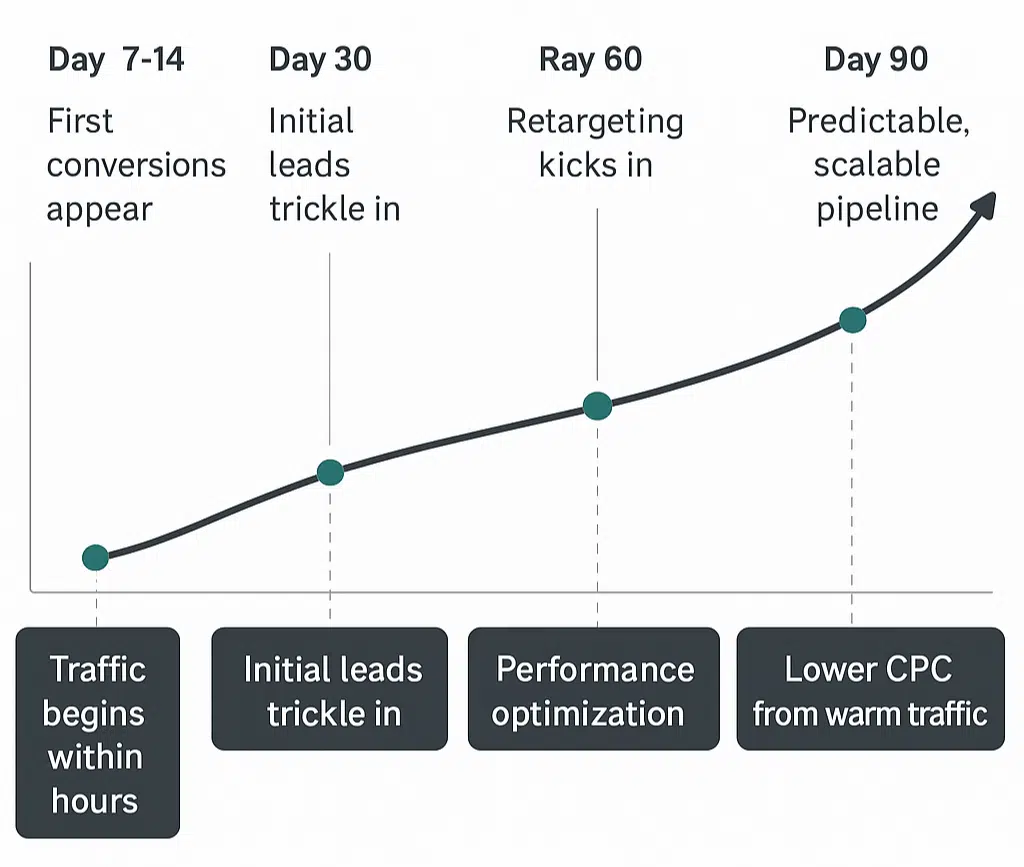
Yes, and in 2025, you probably should.
SEO and Google Ads aren’t rivals. They’re teammates. Think of SEO as your reliable long-distance runner and Ads as your sprinter.
Together?
They cover every inch of the race.
Here’s why a blended strategy works best now:
When your brand shows up in both paid and organic results, you instantly boost visibility and trust.According to AgencyAnalytics, owning both the top ad and the top organic spot can capture up to 49% of all clicks on the page. That kind of presence tells searchers you’re the real deal.
Running paid search campaigns gives you real data on which keywords actually convert. That takes the guesswork out of content planning. At Logic Inbound, we use this insight to sharpen our clients’ SEO strategy from day one.
Someone visits your blog, reads for 3 minutes, and leaves. With Ads in place, you can follow up with a targeted message on YouTube, Gmail, or other sites they visit. That’s low-cost, high-return brand lift.
SEO takes time. Ads don’t. But Ads stop when your spend stops. Together, they give you a pipeline now and later.
This isn’t just theory, it’s smart marketing.
And when you zoom out, it’s all about having the right digital marketing channels comparison for your goals.
For some businesses, SEO leads. For others, Ads carry the weight early on. But most of the time?
You need both working in sync.
Not all businesses should treat marketing the same. What works for an online skincare brand probably won’t work for a local roofer or a B2B SaaS startup.
According to Improvado’s breakdown of ROI by channel, SEO delivers an average return of $22 for every $1 spent, while Google Ads tends to bring in around $2 for every $1 invested. That gap matters when you’re planning for scale.
Let’s break down where SEO vs Google Ads fit depending on your business model.
The goal?
Help you stop guessing and start scaling.
🛠️ Local Service Businesses
Think plumbers, roofers, dentists, contractors.
🛒 Ecommerce Brands
Selling products online?
🧠 B2B SaaS or Tech
Long sales cycles. Research-heavy buyers.
⚖️ Medical, Legal, & Other High-Trust Niches
Where authority and trust make or break the deal.
| Business Type | Start With | Scale To | Track This |
| Local Service | Google Ads | Local SEO | Cost per lead, GBP rankings |
| Ecommerce | Google Shopping | Product SEO | ROAS, organic clicks to PDPs |
| B2B SaaS | SEO + Content | Branded Ads | Demo signups, organic traffic |
| Medical / Legal | Google Ads | Trust SEO | Calls, forms, local visibility |
Choosing the right channel isn’t guesswork, it’s strategy. And if you’re not sure which to lead with, our digital marketing services team can help you figure it out.
Before you go all in on SEO or Google Ads, take a step back.
The best choice isn’t always about traffic, it’s about what moves the needle for your business right now.
Start with your budget
If you’ve got cash but no time, Google Ads can get leads rolling fast. If you’re planning for long-term growth, SEO will stretch your dollars further.
Be honest about your timeline
Need results this quarter? Ads win. Willing to invest now to own organic rankings in six months? SEO is your friend.
What internal resources do you have?
Do you have someone to write content? A developer who can fix technical issues? If not, SEO might feel like herding cats. Google Ads, on the other hand, needs less in-house lift, but demands constant optimization.
Where do you stand now?
If your competitors are outranking you everywhere, SEO may take time to catch up. But if your site’s already halfway there, it might just need a strategic push.
Let’s figure it out together. Book a free strategy call and we’ll help you build the right plan for your goals.
It depends on what you need right now. SEO gives long-term visibility and trust, but it takes time. Google Ads gives fast leads but stops when your budget runs dry. For many small businesses, the best answer is both, ads for now, SEO for later. If you’re local, check out our home improvement SEO guide to see what long-term organic traffic can really do.
You can, but that doesn’t mean you should. Turning off Ads can shrink your reach overnight. SEO and Google Ads work best when layered, organic results build trust, and ads give you extra SERP real estate. Dropping one entirely can leave money on the table, especially if your competitors are still running both.
Not exactly, but it’s changing the game. In 2025, AI Overviews answer a lot of search queries before anyone scrolls. That makes ranking harder, but not impossible. SEO is still alive, it just needs to be smarter. Structured content, schema, and intent-driven answers (like this FAQ) help you win in an AI-first world.
Google Ads charges you every time someone clicks. SEO takes time, content, and technical work, but those clicks are free once you’re ranking. Over 12 months, SEO is often cheaper and more sustainable. But if you need leads this week? Ads will get you there.
Google Ads can drive traffic within hours. SEO usually takes 4 to 6 months to show real movement. Think of Ads as speed and SEO as momentum. The smartest marketers use both to balance quick wins with long-term growth.
If you have the time, tools, and know-how, go for it. But most business owners are already wearing 14 hats. SEO and PPC need consistent strategy, testing, and optimization. If you’d rather focus on running your business, it’s worth working with a team that lives and breathes this stuff. (We might know a good one…)
Still debating SEO vs Google Ads? Totally fair.
Even seasoned marketers struggle with this one. What works for one business might flop for another.
Here’s the reality: you don’t need a guess, you need a plan. One that fits your budget, timeline, and goals without wasting money on dead-end clicks or blogs no one reads.
That’s where we come in.
At Logic Inbound, we’ve helped hundreds of businesses build the right digital mix. Whether you need fast leads, long-term growth, or a strategy that blends both, we’ll map it out with you.
Book a free strategy session through our contact page and get expert, honest advice on what actually works for your business, not just what sounds good on a marketing podcast.
Prefer to explore a bit first?
Start with our full SEO and PPC services overview to see what we offer and how we think.
Let’s turn search into growth together.
If your business isn’t showing up on Google Maps, you’re probably making one of these 7 local SEO mistakes and it’s costing you real customers. Why does that matter so much?
Because roughly half of all people who search for a local business on their smartphone visit a store within a day, and 78% of those searches lead to an offline purchase, according to BrightLocal.
In other words, if you’re not showing up, you’re missing out on actual paying customers.
When someone in Seattle searches “plumber near me” or “best med spa in Seattle WA,” they’re not scrolling past the first few listings. They’re clicking the top result, calling the number, and booking a service. That’s what local SEO is all about, showing up first when it matters most.
But here’s the problem: most small businesses in Seattle are doing local SEO wrong without even knowing it. From outdated Google listings to missing reviews or inconsistent contact info, the same common mistakes show up again and again. And in 2025, they’re more expensive than ever.
Thanks to Google’s AI-powered summaries and the rise of zero-click search (nearly 60% of Google searches now end without any click), the margin for error is thinner than ever. Even one mistake can knock you out of the Map Pack. And once you’re gone from the local 3-pack, you’re practically invisible to the very customers ready to buy, after all, businesses in the 3-pack earn 126% more traffic and 93% more actions (calls, clicks, direction requests) than those ranking lower.
In this guide, you’ll learn:
We’ve even included a free checklist to audit your SEO like a pro.
Let’s fix what’s holding you back before your competitors take the lead.
Local SEO isn’t some complex marketing theory. It’s the stuff that helps your business show up when someone searches things like “emergency plumber in Seattle” or “best med spa near me.” It’s how you land in Google’s local map results, which is where most of the calls and clicks actually happen.
Now, here’s the kicker: 46% of all Google searches are local. Nearly half. So if you’re not showing up when someone nearby is ready to hire, you’re not just missing traffic, you’re bleeding customers.
Most business owners don’t realize how easy it is to mess this up. A wrong phone number on Yelp. A Google Business Profile missing service areas. Or no reviews. These local SEO mistakes seem small, but they can push you off the map completely.
And in Seattle, where dozens of HVAC companies, roofers, and clinics are all fighting for the same spots, one slip-up can send your competitors straight to the top. Google’s proximity filter means even if you’re the best in town, you won’t rank if your info’s off, or worse, outdated.
The good news? These mistakes are fixable. And we’re about to show you how.
NAP stands for Name, Address, and Phone Number, and it matters more than most business owners think. Google uses your NAP details to verify that you’re a real, credible business. In fact, accurate NAP information across the web is still considered one of the top factors for local search rankings.
But if your info is mismatched across platforms? You’re sending Google mixed signals. And mixed signals get you ignored.
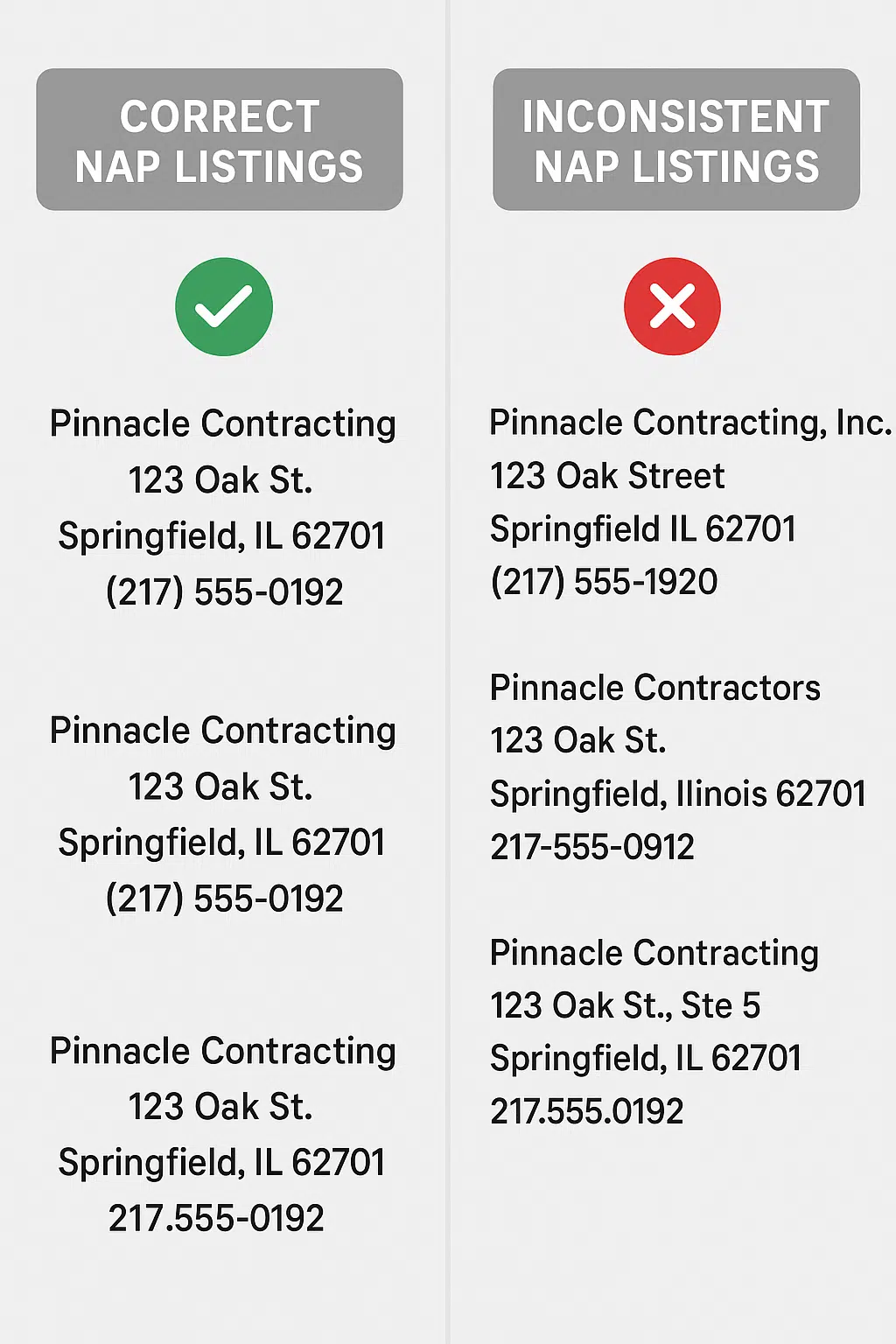
Let’s say your website says “123 Main St. Suite 200,” but your Yelp page just says “123 Main.” Or your phone number on YellowPages is your old line from two years ago. Even small differences like “Street” vs. “St.” or missing suite numbers can create confusion. Google sees that and says, “Hmm… is this one business or two?” That’s how common local SEO mistakes happen quietly, but with real consequences. And those consequences aren’t just about rankings, they affect customer trust too. In fact, 80% of consumers say they lose trust in a business when its online contact information is incorrect or inconsistent.
In Seattle, this matters a lot. The local map pack has limited slots. If your NAP isn’t locked in and consistent across directories like Yelp, BBB, Facebook, YellowPages, and your own website, you’re leaving room for your competitors to leap ahead. We’ve seen it time and time again.
So how do you fix it?
Want an easier way to keep your local listings clean and consistent? Check out our affordable SEO services for small businesses that want to stop guessing and start ranking.
If your Google Business Profile (GBP) still looks like it was thrown together in a hurry, or worse, hasn’t been touched since 2022, you’re probably missing out on calls, clicks, and customers. Consider that 64% of consumers have used the phone number on a Google Business Profile to contact a local business. On top of that, Google’s own data shows customers are 70% more likely to visit (and 50% more likely to buy) from businesses with a complete profile.
Your GBP is your local storefront on Google. It’s the first thing people see when they search “electrician near me” or “best dentist in Seattle.” Yet we constantly see local SEO mistakes like half-filled profiles, blurry logos, or services listed like someone gave up halfway through.
In 2025, Google has made things even spicier. With AI-generated business summaries, Google is now auto-writing descriptions based on your content, reviews, and website. That means if your profile is vague, outdated, or misaligned, Google could end up describing your business in a way that hurts more than it helps.
So, what does a well-optimized profile look like today?
In a competitive city like Seattle, where search volume is high and the local pack is crowded, your GBP needs to be sharp. Google decides who ranks in that 3-pack based on proximity, relevance, and prominence. If you’re missing any one of those, you’re toast.
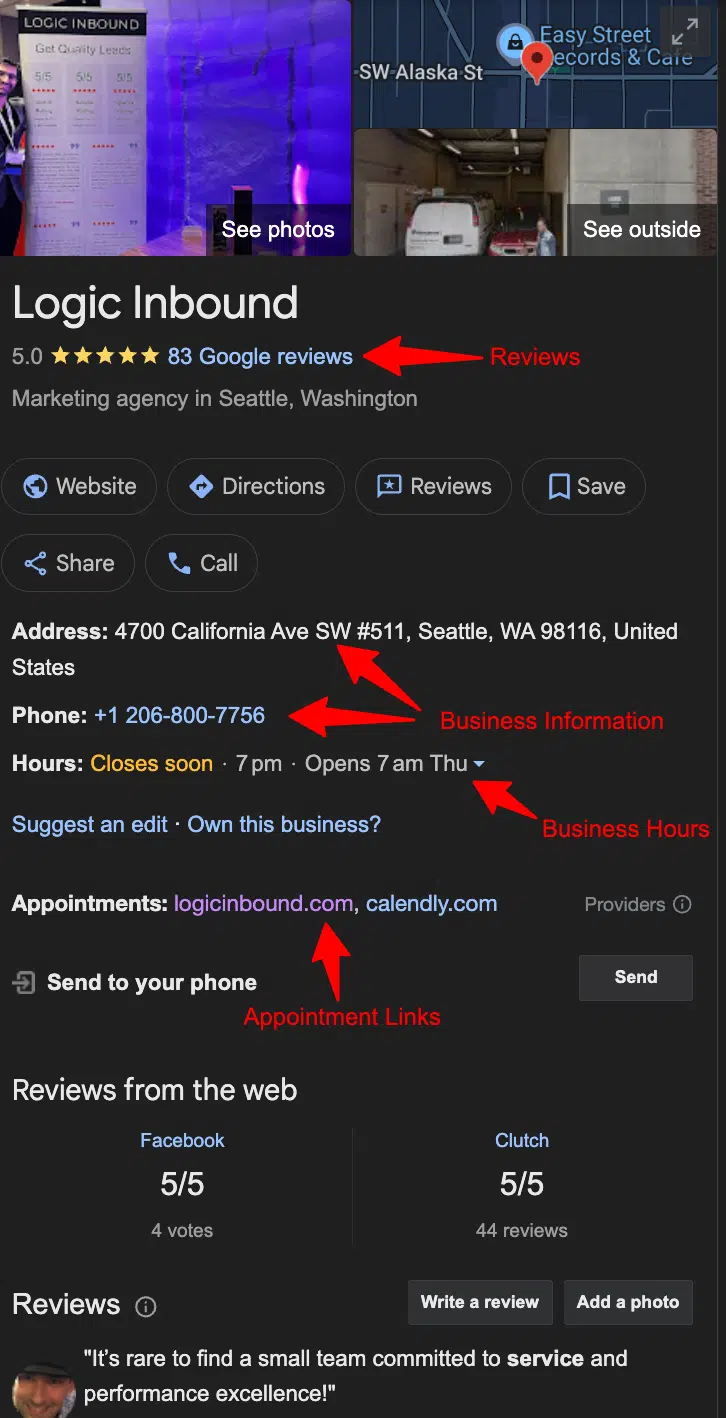
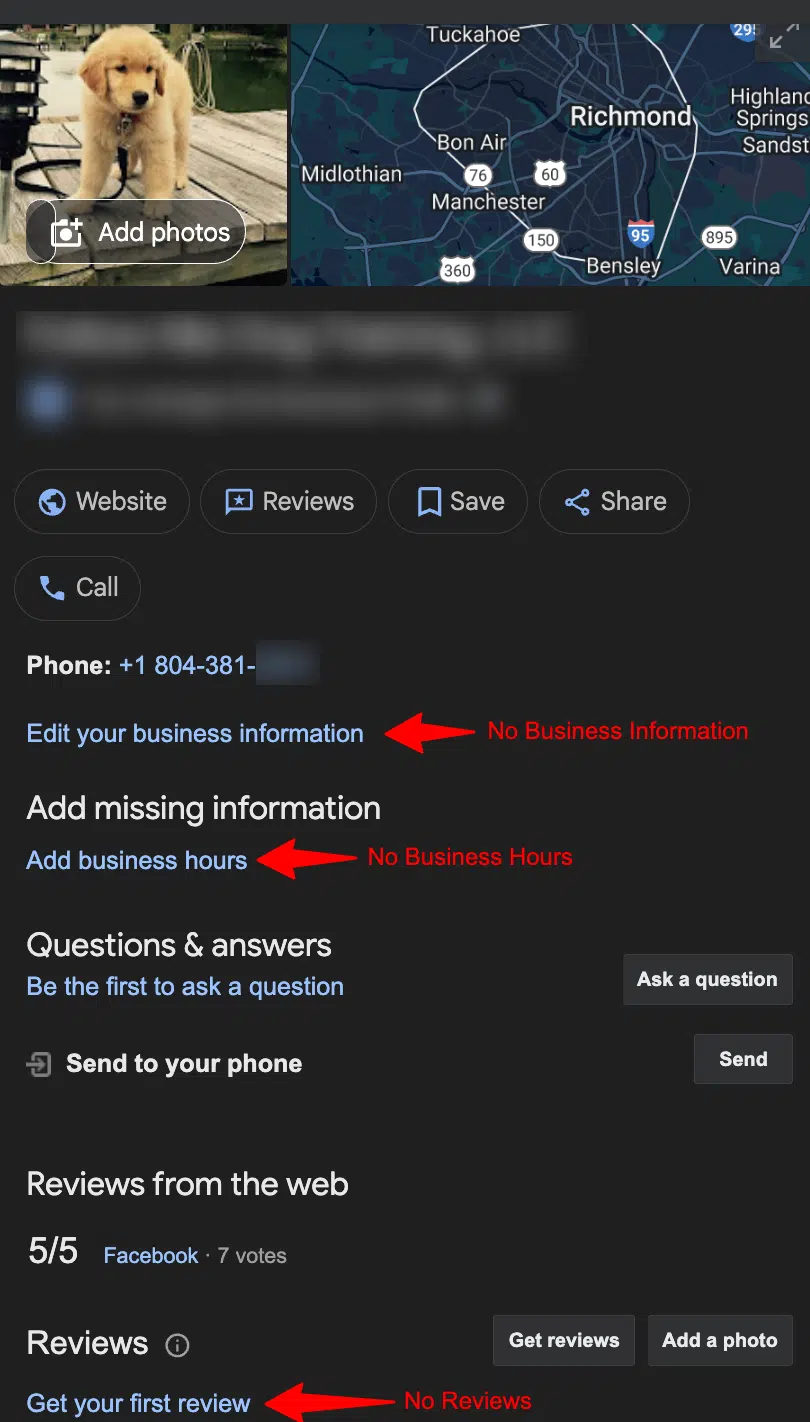
Optimized Google Business Profile
Unoptimized Google Business Profile
And if you’re wondering how paid visibility fits in, we also broke down how Google Local Services Ads play a role in boosting trusted local listings.
Not sure why your listing isn’t ranking? We broke it all down in this blog:
👉 Why is my business not showing up on Google
If you want to compete in Seattle local SEO, this is non-negotiable.
This isn’t just a profile. It’s a lead magnet, when you treat it right.
We’ve helped brands like Ticket Cutter grow their local visibility by dialing in every detail of their profile, from categories to geotagged photos and the results speak for themselves.
Let’s get one thing straight: Google’s algorithm may be smarter in 2025, but it still leans on the basics. And local citations? They’re still a big deal. In fact, research shows citations remain the fifth most significant ranking factor for Google’s local pack visibility.
If you’re new to the term, citations are simply mentions of your business across the web – usually your name, address, and phone number on directories like Yelp or the BBB. They act like references for your business. The more accurate and relevant they are, the more Google trusts you.
Here’s where it goes sideways: most Seattle businesses either don’t have enough citations, or worse, they’re listed in the wrong places. Like some dusty national directory no one’s heard of since 2014. That’s like handing Google a fake resume and expecting a job offer.
If you want to fix local SEO issues, especially in a competitive market like Seattle, you need citations in the right places. One study found that businesses listed on 30+ relevant sites saw a 136% boost in consumer actions (e.g. calls, clicks, direction requests). Start with these top Seattle-specific directories to build quality citations:
And don’t forget the high-authority staples:
Want to save time?
Use tools like BrightLocal or Whitespark to scan your current citations, fix inconsistencies, and build new ones that actually move the needle.
Not sure where your listings stand or what’s worth fixing? Our local SEO services for contractors focus on practical fixes that generate real leads, not just vanity metrics.
Citations aren’t glamorous. But they’re the quiet workhorses of local SEO. And right now, your competitors are probably skipping them. Which gives you an edge, if you do it right.
If you’re trying to rank in Seattle with keywords like “plumber” or “lawyer,” you’re basically yelling into a crowd of millions and hoping Google hears you.
Spoiler: it won’t.
Here’s what most local businesses get wrong. They focus on broad, generic keywords that are technically relevant, but completely useless without context. Google has gotten smarter. It knows when someone is looking for a local solution. And in 2025, it’s prioritizing pages that actually say where the service is offered. One industry analysis even observed a clear shift toward localized service pages appearing in search results instead of generic pages.
So instead of trying to rank for “plumber,” you need to rank for “plumber in Seattle” or “emergency plumber Seattle WA.” Those small tweaks signal to Google: this page is for people in this city, right now.
And if you serve multiple neighborhoods or cities? You need service-area pages for each one. This is a foundational piece of Seattle local SEO that most competitors still skip.
Here’s a quick cheat sheet to drive it home:
| Generic Keyword | Better Local Keyword | Search Intent |
| Plumber | Plumber in Seattle | Local |
| Dentist | Emergency dentist Seattle | Transactional |
| Lawyer | Family lawyer Seattle | Navigational |
Need help mapping out the right keywords for your industry? We walk through this process in our affordable SEO services for small businesses. It’s not just about traffic, it’s about leads that convert.
If you’re not tailoring your content to match real-world searches in your area, you’re missing one of the most actionable SEO tips for local businesses.
This is one of those local SEO mistakes that’s easy to fix and incredibly costly if you ignore it.
Take a wild guess where most of your customers are searching from in 2025. Yep, their phones. In fact, over 60% of local searches happen on mobile. And yet, plenty of business websites still look like they were designed on a desktop in 2012… and tested on a flip phone.
Let’s be real. If your mobile site loads slow, buttons are too small, or forms break, you’re not just annoying users, you’re losing leads. That’s especially painful for service-based businesses, where customers are searching at the moment: “plumber open now,” “locksmith near me,” “emergency HVAC Seattle.”
Google’s not a fan either. Your mobile site is graded based on something called Core Web Vitals, a fancy way of measuring how fast your page loads, how quickly it responds, and how stable it looks as it loads. Fail those tests, and Google pushes your site down the results. That’s one of the easiest local SEO mistakes to fix, and one of the most ignored.
Now let’s talk about voice search. If you’ve ever asked your phone, “Who’s the best roofer near me open now?,”you’ve used it. And your potential customers are doing it every day. But most websites aren’t optimized for how real people speak. They stuff in short keywords instead of using natural, conversational phrasing like:
By building long-tail Q&A-style content and using schema markup, your site becomes voice-search friendly. That’s how you show up when Siri, Alexa, or Google Assistant answers the question.
We’ve also shared how to optimize your content for voice search in a recent AI search case study, and the same principles apply to local rankings.
If your site isn’t working well on mobile, and you’re not answering how people actually ask, it’s time to overhaul it.
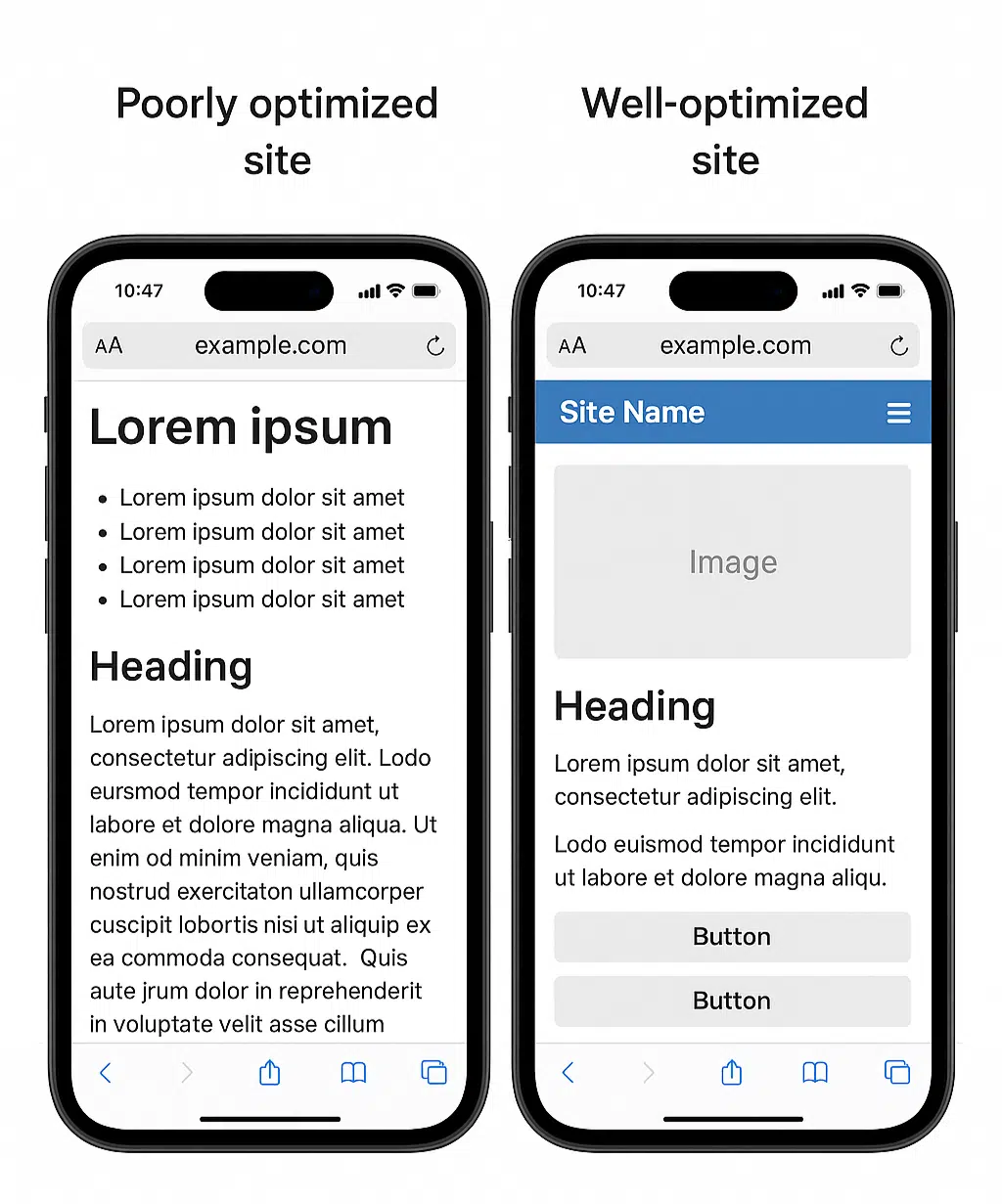
Let’s face it: reviews are the new referrals.
When someone in Seattle searches for a service – plumber, chiropractor, or mobile detailer, they’re not calling the first listing. They’re calling the one with dozens of real reviews that sound like actual people. In fact, research shows up to 89% of consumers use online customer reviews when researching a product or service. If your listing has none, or worse, only your mom’s, you’re invisible.
Google doesn’t just show businesses with the most reviews; it highlights those with steady, authentic feedback (ideally across multiple platforms). In fact, the majority of consumers (about 74%) check at least two different websites for reviews, so it pays to diversify your review presence. And in 2025, things got a bit more…strict.
Thanks to smarter AI, Google now flags patterns that look suspicious (and it’s aggressive about it, in 2024 alone Google removed over 240 million fake reviews as part of a crackdown). Too many five-star reviews in one day? Could be fake. Asking only happy customers to leave feedback? That’s called review gating, and it can now tank your visibility.
This is one of the most avoidable local SEO errors, yet so many businesses still treat reviews like a nice-to-have instead of a ranking factor. Big mistake.
Here’s what works now:
If your business needs help setting up a real review system that doesn’t violate Google’s rules, our SEO audit service can show you exactly where the gaps are, no fluff, just data.
Oh, and fake reviews? They’ll get flagged eventually. And when they do, the fallout hits hard. Your best move? Be real, be consistent, and ask every time.
You wouldn’t drive blindfolded. So why are so many business owners flying blind with their local SEO?
If you don’t know where your leads are coming from, or worse, if they’re coming at all, how can you improve? One of the most overlooked SEO tips for local businesses is simple: track what matters. Not rankings. Not impressions. We’re talking about real stuff: clicks, calls, and customers.
This is where most small business owners miss the mark. They spend money on SEO or post to their Google Business Profile, but never look at the results. That’s one of the sneakiest local SEO mistakes because it feels productive… but gets you nowhere.
Here’s what you actually need to watch:
If you run a Seattle service-based business, and you’re not seeing growth, it’s time to dig into your data. Only 28% of small businesses track their SEO ROI, and that’s a stat you don’t want to be part of.
At Logic Inbound, we give clients a clear snapshot of what’s working – broken down by calls, conversions, and real lead quality. We’ve done it for businesses in competitive cities like Seattle and delivered full transparency without the fluff.
In one campaign for a high-volume service brand, we discovered that a single keyword tweak increased booked calls by 32%, and they didn’t spend a dollar more on ads.
Not sure where to start fixing your SEO? You don’t need a full-blown audit to catch the basics. You need a simple, no-fluff checklist and that’s exactly what we built.
Our Local SEO Mistake Scorecard is a self-audit tool that helps Seattle business owners quickly spot the most common problems. Use it to catch issues with your Google Business Profile, keyword targeting, review strategy, and more.
You’ll be able to check off items like:
It’s fast, free, and built to help you stop guessing and start ranking.
If you’re looking for next steps once you’ve filled it out, check out our blog on improving your rankings with simple tweaks.
If you’re running a business in Seattle, the days of casually ranking for “roofer near me” are long gone. The city’s search competition has exploded. Whether you’re a plumber in Ballard or a chiropractor in Capitol Hill, everyone’s fighting for the same three spots in the map pack.
After Google’s Vicinity Update in 2023, the rules changed. Proximity became even more critical. Now, even a few blocks can make or break your visibility. That’s made Seattle local SEO more granular and more unforgiving than ever.
What does that mean for you?
It means that skipping reviews, neglecting citations, or letting your Google Business Profile collect digital dust isn’t just risky. It’s self-sabotage. Your competitors aren’t necessarily better, they’re just more dialed in.
For local service-based businesses, SEO isn’t just about traffic anymore. It’s your lifeline to leads, phone calls, and booked jobs. And in a city this competitive, showing up first is the difference between growth and ghost town.
Want a deeper look at how to build sustainable, local search visibility? Our guide to SEO for mold removal companies walks through one niche in detail, but the same principles apply across industries.
You’ve seen the 7 local SEO mistakes. Now here’s the hard truth: if you’re making even a few of them, you’re probably losing leads every single week and not even realizing it.
Most Seattle business owners are too busy running their company to micromanage SEO, track listings, and respond to reviews. That’s where we come in.
At Logic Inbound, we specialize in Seattle local SEO for service-based businesses that need to rank, convert, and grow. We’ve helped contractors, clinics, and home service brands across the city dominate the map pack and we can do the same for you.
We have worked with several SEO companies over the years. When one expert left the industry, we were referred to Logic Inbound. This referral turned out to be the best decision we’ve made! Our online presence and relevance saw a significant improvement within the first year. Vlad and Hayk have been consistently available, and their reports are incredibly valuable. We have full confidence in their ongoing dedication to our success. Thanks to their efforts, our company has reached new heights!
The Scotts
It’s fast, actionable, and built to show you what’s working (and what’s not) before your competition gets ahead.
Let’s fix what’s holding you back, starting today.
There are a few reasons. Most commonly, your Google Business Profile isn’t fully optimized, your NAP info is inconsistent, or your business lacks relevance and prominence in Google’s local algorithm. If you’re not in the map pack, it’s not random, it’s a signal something needs fixing.
The biggest offenders are:
These local SEO errors quietly kill your visibility and they’re all fixable.
Most businesses see early traction in 30 – 60 days, but competitive markets like Seattle often take 3 – 6 months for consistent lead flow. That’s assuming your site, citations, and GBP are properly optimized from the start.
Local SEO focuses on ranking for city-based or “near me” searches, like “Seattle electrician”. It’s all about showing up in the map pack and generating phone calls, not just website visits. Regular SEO is broader and targets national or informational keywords.
You can absolutely start it yourself using tools like:
But if you’re short on time or need faster results, working with a local SEO agency like Logic Inbound helps you avoid costly trial and error. You’ll get measurable results without guessing.

CNA CASE STUDY by Ammar Z | Mar 13, 2020 Helping CNAOnlineCourse.com Grow 19x In
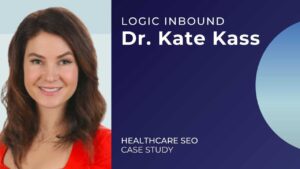
CASE STUDY: DR. KATE KASS by Dr. Kate Kass SEO is growing in popularity as
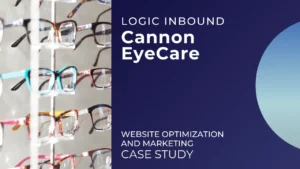
Mold Removal Company Case Study – Increased Organic Traffic by 627% by Hayk Saakian |
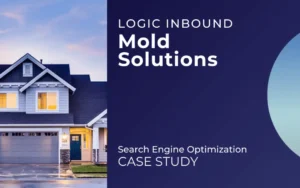
Mold Removal Company Case Study – Increased Organic Traffic by 627% by Hayk Saakian |